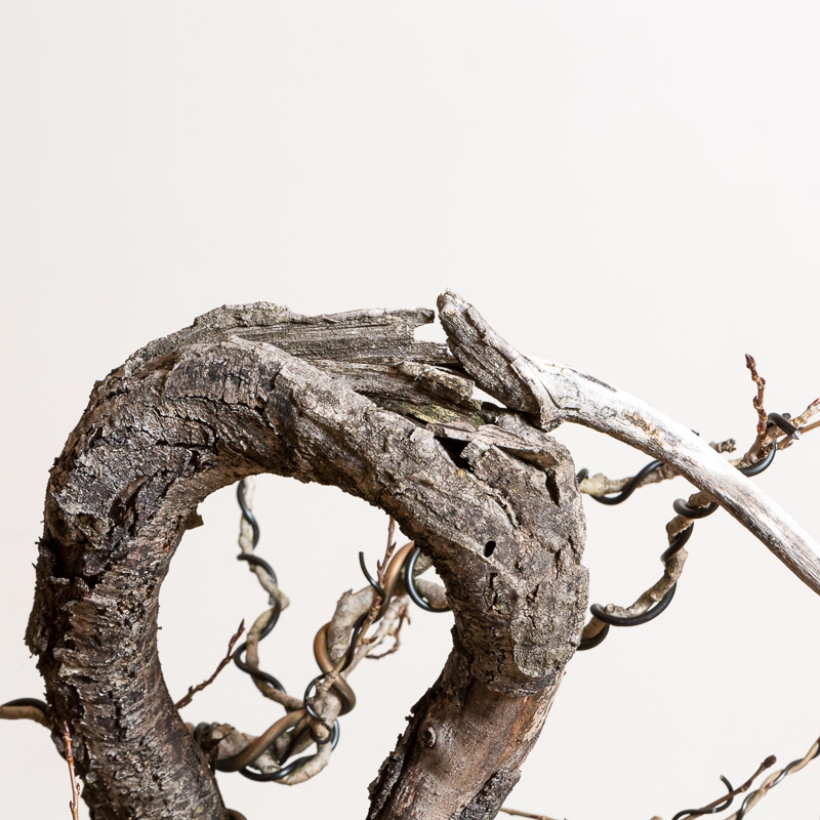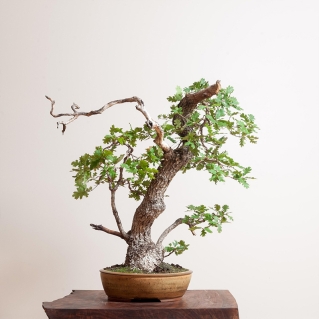Quaking Aspen Bonsai

General Information
Quaking aspen—Populus tremuloides—is an elegant, oily, free-formed broadleaf deciduous bonsai. It has delicate leaves and an incredibly smooth, black bark that becomes thicker and more characterized with age.
The striking beauty of the quaking aspen makes it a highly sought-after bonsai. Once believed to be impossible to cultivate inside a containerized environment, high water mobility broadleaf deciduous techniques have proved to produce a beautiful, long-lived specimen.

Caring for Quaking Aspen Bonsai
Watering
Quaking aspen is a high water mobility broadleaf deciduous tree that originates from environments with a high elevation zone. In a containerized environment, it thrives best with balanced water and oxygen levels. The soil should stay damp and never fully dry out.
Sun Exposure
In northern climates, the light and sun recommendations for quaking aspen are full sun in the spring and fall, and shade in the summertime when temperatures rise over 85°F.
30% shade is recommended for temperatures over 85°F to help prevent scorched leaves due to too much sun exposure.
Temperature
Quaking aspen tends to grow with rigor and abundance in cooler, northern climates. Like other alpine species, they respond best to cool, nighttime temperatures. Overly warm nighttime temperatures can cause the plant to metabolize rapidly.
While quaking aspen can momentarily sustain temperatures over 100°F, it cannot consistently tolerate heat spells of this magnitude. Generally, daytime temperatures above 85°F will require using a shade cloth.
Quaking aspen is tremendously tolerant to cold weather. However, if the temperature falls to 15°F or lower, they will need to be brought indoors.
Fertilizing
Light to moderate fertilization is recommended for quaking aspen.
Although the quaking aspen is a high water mobility tree, it will not grow at rapid rates like a maple. They are genetically programmed to produce flushes of growth within a specific window that is triggered by daylight and temperature.
Pruning
There are three main times throughout the year where quaking aspen should be pruned:
1. During springtime prior to the flush of growth, especially when you are styling and removing larger branches for refinement
2. During late spring/early summer post flush, which can incite more ramification
3. During fall when the leaves begin to drop, which can help create an even distribution of buds at the tips of the branches over the course of the fall and winter
Repotting
As quaking aspen buds swell in the spring, the bonsai is going to thrive best in 1 1/16 to ¼ inch (2ml to 6ml) solid akadama soil.
Quaking aspens do not do well in small containers, as they need to maintain a cooler root system. A slightly deeper container has a better water and oxygen dynamic and better temperature buffering capacity, which are needed for the ultimate health of the tree.
Propagation
Quaking aspen freely propagate through root suckers, which can be collected by severing both ends of the elongating root. The ease of propagation with this plant is partially why Aspen trees are some of the largest and oldest connected living organisms on Earth.
Pests/Disease
Primarily, quaking aspen suffers from foliar pathogens. This is commonly presented and characterized as black spots, or ink spots, that appear on the leaves. This is especially prevalent in the summertime in humid regions of North America.
If you notice ink spots on the leaves of your quaking Aspen, carefully remove them to prevent the spread of disease and consider taking protective fungicide measures.
Aphids and sap-feeding insects will always be something that wants to feast on the soft, fleshy growth of quaking Aspens.
Quaking Aspen Bonsai FAQS
The key to collecting quaking aspen is finding standalone aspen trees.
In a forest environment, Aspens produce very large and mature root suckers, which can be difficult to cut. Mid-sized trees with younger root suckers are ideal for collection.
Quaking aspen can be cultivated in a containerized environment for prolonged periods. The key is to ensure the container is not too small or shallow. This will ensure the proper water and oxygen balance needed to continually hydrate this water-loving and high water mobility species.
Similar to other smaller broadleaf deciduous trees, simply pruning the tips to the desired length of internodes for bifurcation will allow the bonsai to thrive.
Since quaking aspen has a short growing season and originates from environments with high elevation, fully defoliating the tree should be avoided as the species will not have enough energy to produce another full flush.





